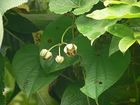Note: This is a project under development. The articles on this wiki are just being initiated and broadly incomplete. You can Help creating new pages.
Difference between revisions of "Holostemma adakodien - Arkapushpi, Holostemma"
(→References) |
(→References) |
||
| Line 52: | Line 52: | ||
<references> | <references> | ||
| − | <ref name="chemical composition">[http://www.medicinalplantsindia.com/jivanti.html " | + | <ref name="chemical composition">[http://www.medicinalplantsindia.com/jivanti.html "Chemical contents"]</ref> |
| − | <ref name="Leaf">[https://indiabiodiversity.org/species/show/229953 " | + | <ref name="Leaf">[https://indiabiodiversity.org/species/show/229953 "Diagnostic"]</ref> |
</references> | </references> | ||
==External Links== | ==External Links== | ||
Revision as of 16:04, 1 May 2018
Arkapushpi is a genus of Flowering plants formerly belonging to the plant family Asclepiadaceae, now considered to be part of the Apocynaceae. The genus was first described in 1810. As presently constituted, the genus contains only one known species, Holostemma ada-kodien, native to southern Asia (China, Nepal, Pakistan, Kashmir, India, Sri Lanka, Myanmar, Thailand).
Contents
Uses
Pregnancy care, Eye care, Skin diseases, ulcers, wounds, gonorrhoea, diarrhea, coughs, loss of appetite, stomach-ache, heal ulcers.
Parts Used
Chemical Composition
Alpha-amyrin, lupeol and beta-sitosterol[1]
Common names
| Language | Common name |
|---|---|
| Kannada | |
| Hindi | Chhirvel |
| Malayalam | Ada kodien |
| Tamil | Palay kirai |
| Telugu | Palagurugu |
| Marathi | NA |
| Gujarathi | NA |
| Punjabi | NA |
| Kashmiri | NA |
| Sanskrit | Jivanti, Arkapushpi |
| English | Holostemma |
Habit
Identification
Leaf
| Kind | Shape | Feature |
|---|---|---|
| Large | Triangle | leaf's Margin is Entire and Venation-Cross venulated. leaves 7-15 cm length and 5-10 cm breadth, top of the leaf is smooth and bottom part is hairy |
Flower
| Type | Size | Color and composition | Stamen | More information |
|---|---|---|---|---|
| peduncled cymes | 10–15 cm long | Yellow-white | peduncles shorter than the petiole, stout; pedicels 1.5 cm long; calyx lobes ovate, 4 mm long; corolla 2.5 cm across, campanulate, pale purple, lobes 8 x 6 mm, ovate, obtuse |
Fruit
| Type | Size | Mass | Appearance | Seeds | More information |
|---|---|---|---|---|---|
| oblong pod | Thinly septate, pilose, wrinkled | {{{6}}} |
Other features
List of Ayurvedic medicine in which the herb is used
- Vishatinduka Taila as root juice extract
Where to get the saplings
Mode of Propagation
How to plant/cultivate
Commonly seen growing in areas
Scrub jungles, deciduous forests, plains
Photo Gallery
References
External Links
Categories:
- Pages that are stubs
- Ayurvedic Herbs known to be helpful to treat Pregnancy care
- Ayurvedic Herbs known to be helpful to treat Eye care
- Ayurvedic Herbs known to be helpful to treat Skin diseases
- Ayurvedic Herbs known to be helpful to treat ulcers
- Ayurvedic Herbs known to be helpful to treat wounds
- Ayurvedic Herbs known to be helpful to treat gonorrhoea
- Ayurvedic Herbs known to be helpful to treat diarrhea
- Ayurvedic Herbs known to be helpful to treat coughs
- Ayurvedic Herbs known to be helpful to treat loss of appetite
- Ayurvedic Herbs known to be helpful to treat stomach-ache
- Ayurvedic Herbs known to be helpful to treat heal ulcers
- Herbs with Rhizome used in medicine
- Herbs with latex used in medicine
- Herbs with common name in Hindi
- Herbs with common name in Malayalam
- Herbs with common name in Tamil
- Herbs with common name in Telugu
- Herbs with common name in Sanskrit
- Herbs with common name in English
- Habit - Climber
- Index of Plants which can be propagated by Seeds
- Herbs that are commonly seen in the region of Scrub jungles
- Herbs that are commonly seen in the region of deciduous forests
- Herbs that are commonly seen in the region of plains

